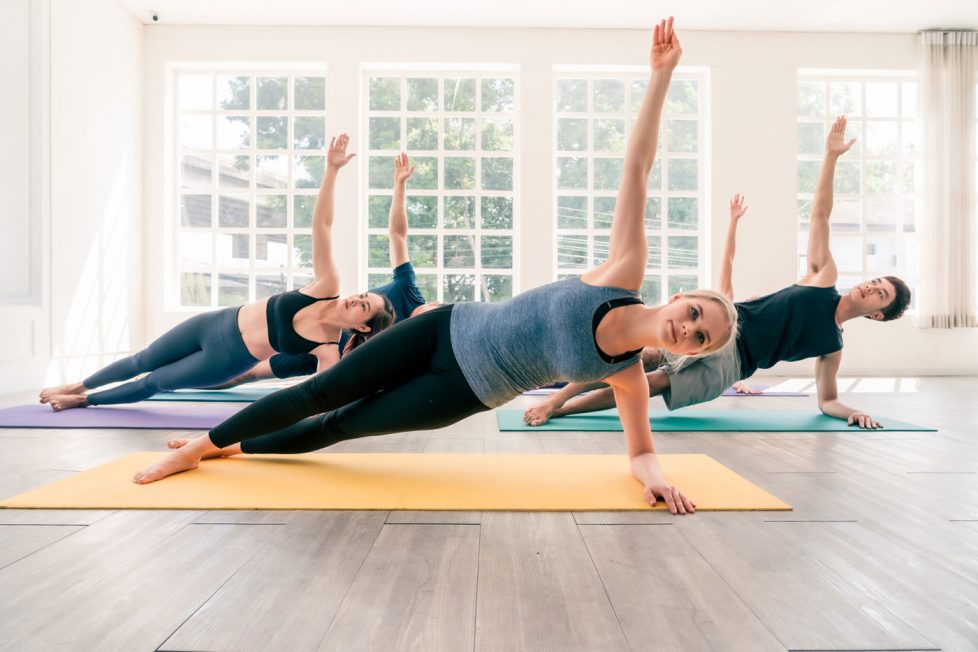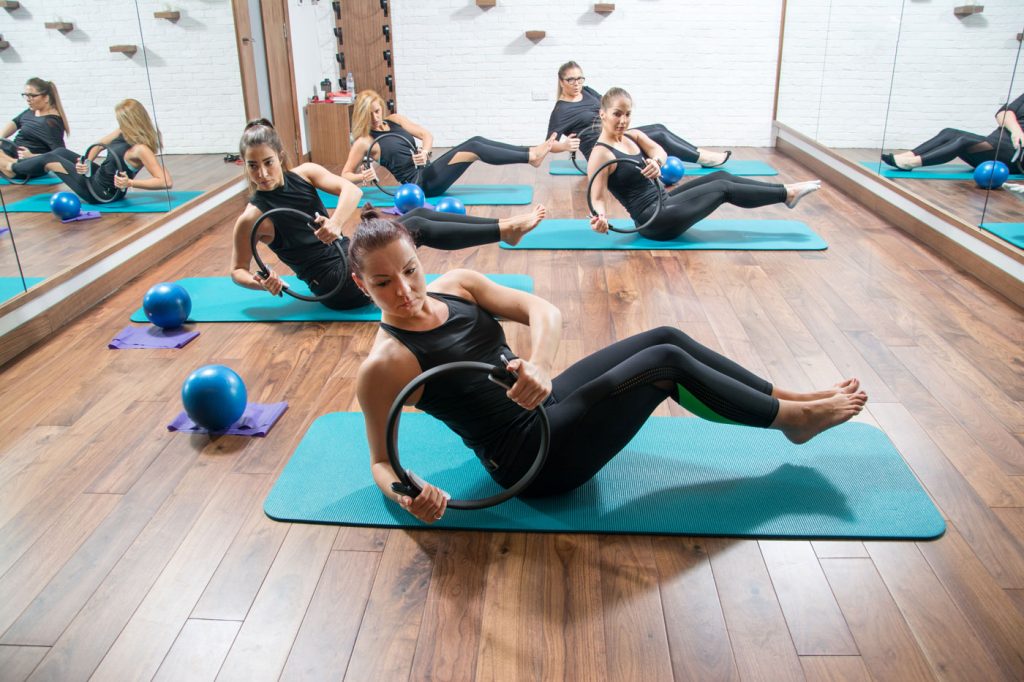Pilates or yoga. Which is better?
It’s a hard task to determine which one between yoga and pilates is better.

It’s a hard task to determine which one between yoga and pilates is better.

Both are exercises that focus on mind-body connection and offer similar health benefits, including improved strength and flexibility. To decide which of these disciplines is better, you need to keep in mind that their approaches and goals differ.
One is a holistic discipline originating from ancient India, the other a specific physical system devised by a German anatomist in the early 20th century: while there might be a lot of cross-over between yoga and Pilates, the two are inherently very different.
When it comes to whether yoga or Pilates is better for your body, it really all depends on your goals. With Pilates, there’s always a focus on core strength and stability, so if you have back issues or play sports that require a strong core, that workout will be beneficial for you. If you’re looking for a low-impact workout that will still majorly challenge your muscles, Pilates will give you the burn and shake you’re looking for.
Pilates is a workout method created by Joseph Pilates that involves moving through slow, precise, strength exercises with breath control. Pilates focuses heavily on core strength and stability. It can be performed on either a mat or a machine called a reformer, which utilizes a sliding platform with a foot bar, springs, and pulleys for resistance.
There are also machines called the tower and the Cadillac used to practice more advanced techniques or for private lessons. Of the two, Pilates tends to be a bit more fast-paced than yoga, and there’s not typically as much focus on mindfulness throughout classes. Pilates may increase muscle strength and endurance, improve flexibility and posture, lead to better balance, result in decreased joint pain.
Evidence suggests that Pilates may be beneficial for those with the following conditions: arthritis, urinary incontinence, respiratory conditions, joint injuries, back pain, weight loss. Expect a 50-minute beginner workout to burn about 175 calories: an advanced, between 255 and 375 calories. You would probably need to do a 45- to 60-minute advanced routine at least four days a week to maintain or lose weight.

If you’re seeking increased flexibility, relaxation, and a better mind-body connection, yoga is the way to go. For many people, yoga is not only a workout, but a chance to destress and recentre themselves. Yoga is an integrated health management system using breath, movement and meditation to unite mind, body and spirit. It also incorporates elements of philosophy, science and an ethical way of living.
Classes can range from gentle and nourishing to challenging and sweaty. Indeed, there’s a yoga class for everyone out there; from the various more traditional forms like Hatha and Ashtanga to the creative interpretations such as anti-gravity yoga and laughter yoga. All the different yoga type is centred around the five beliefs of proper relaxation, exercise, breathing, diet, positive thinking and meditation.
The benefits of yoga have been studied extensively. In addition to physical and mental benefits, yoga is also known to have positive effects for medical issues, including anxiety, depression, multiple sclerosis, arthritis, respiratory conditions, high blood pressure, chronic pain, type 2 diabetes. Yoga also contributes to weight loss: A 50-minute hatha class will burn about 145 calories; a power yoga class, about 250.
If your goal is dropping pounds, experts recommend you do a high-intensity activity, one study found, however, that people who practiced yoga regularly gained less weight during their midlife years than their nonpracticing peers.
As a bottom line, when comparing the two types of exercise, both Pilates and yoga will increase the body’s tone, or resting muscle strength. Pilates has the ability to use both body weight and additional external resistance options like a Pilates Reformer to achieve this, while Yoga will typically use body weight to challenge us.
As practices today, yoga and Pilates are both celebrated for their numerous health benefits, from offering connection to the body and stress relief, to developing flexibility, strength, control, and endurance. Your individual goals and injuries may dictate which of these two might be better for you. Rather than picking one workout over the other, we suggest trying doing both. Between the two practices you balance strength and flexibility in a healthy way.
Strengthening your core in Pilates class will give you better balance in yoga; increasing your flexibility in yoga class will enable you to move bigger and deeper in Pilates. Plus, any form of exercise has a point of diminishing returns: Get too flexible without the strength to support it, and you might get injured; develop a lot of strength without taking the time to stretch, and you’ll also set yourself up for problems. When deciding which approach is better for you, keep in mind that you can always try one practice and switch to a different one if you find it isn’t well suited to your fitness or wellness goals.
